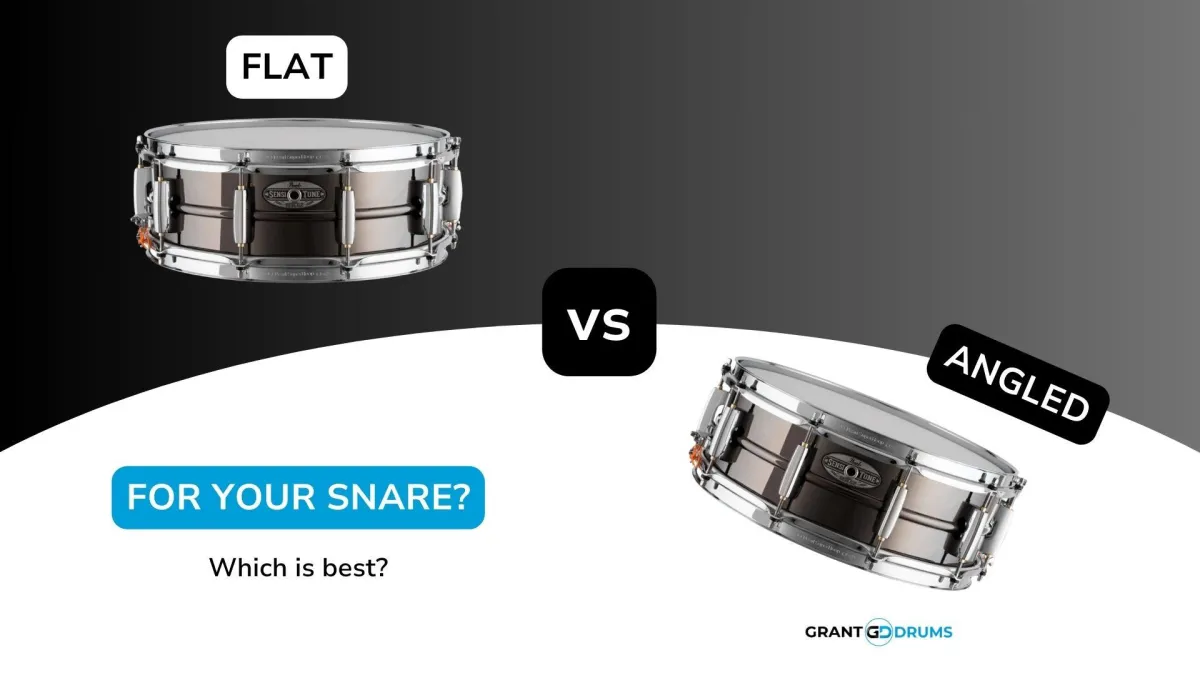ACADEMY MEMBERS
LEARNING TIME
with


Flat Out or Tilted? Finding Your Ideal Snare Drum Angle
Drummers, it's time to address the throne room's silent debate: the flat snare vs. angled snare. Fear not, because this post will guide you through the pros and cons of each setup, helping you find the sweet spot for your drumming style.
The Flat Snare: A Classic for Comfort and Control
Many drummers swear by the flat snare, citing its advantages:
Comfort: A flat snare allows for a more natural playing position, minimizing strain on your wrists and forearms.
Rimshot Power: Flat snares provide a larger rim surface for powerful and clear rimshots, a staple in many drumming styles.
Cross-Stick Precision: The flat surface offers optimal control for precise cross-stick techniques used for accents and ghost notes.
Head Tuning Consistency: Flat placement ensures even tension across the drumhead, leading to a more predictable and consistent sound.
However, flat snares might not be for everyone:
Limited Reach: Depending on your playing style, a flat snare might make certain snare techniques on the far side of the drum more challenging to reach.
Cymbal Interference: If your snare sits high, a flat position could obstruct access to certain cymbals, especially for drummers with a lower cymbal setup.
The Angled Snare: All About Accessibility and Power
Tilting your snare towards you offers distinct benefits:
Increased Reach: An angle allows for easier access to the entire snare drum surface, particularly helpful for complex techniques or playing towards the edge.
Enhanced Dynamics: Angling the snare can focus the sound towards your body, potentially offering more control over dynamics and articulation.
Power Projection: Tilting the snare slightly inwards can provide a more direct attack angle, leading to a punchier and more powerful sound.
But angled snares aren't without drawbacks:
Wrist Strain: Tilting the snare too much can put unnecessary strain on your wrists, especially when playing for extended periods.
Rimshot Difficulty: An extreme angle might make rimshots less comfortable and controlled.
Tuning Challenges: Angled snares can introduce tension inconsistencies across the head, requiring more frequent adjustments.
Finding Your Snare Sweet Spot
The ideal snare angle is a personal journey. Here are some tips to guide your exploration:
Start Flat: Begin with a flat snare and assess your comfort and reach.
Experiment with Angles: Gradually tilt your snare and see how it affects your playing and sound.
Consider Your Style: If you play intricate fills or rely heavily on rimshots, a flatter position might be ideal. For powerful accents and dynamic control, a slight angle could benefit you.
Listen Closely: Pay attention to how the angle affects the overall sound of your snare. Aim for a balance of power, clarity, and comfort.
Remember: There's no one-size-fits-all answer. The best snare angle is the one that feels natural, allows you to play comfortably, and delivers the sound you desire.
Happy drumming, and may your snare find its perfect tilt!
Sick of losing focus and trying every drum exercise you can find on YouTube?
It's time for the...


FREE DRUM CHART
CHOP CHOP
Drum Chart
22 Time Signature Changes in 59 Seconds!
Enter your details and get the chart to your inbox in minutes!
You will receive your Free PDF Chart to your inbox. Please check your spam filters if you can't see it.
Your email will come from help@mail.grantdrums.com



